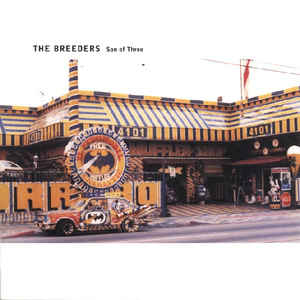 So! You probably know 33⅓ by now — they do book-length essays about albums of interest. It’s a pretty broad-ranging series – Céline Dion‘s Let’s Talk About Love has had a round, as have (arguably equally) asinine rock standards like Let It Be, Use Your Illusion, Wowee Zowee etc.
So! You probably know 33⅓ by now — they do book-length essays about albums of interest. It’s a pretty broad-ranging series – Céline Dion‘s Let’s Talk About Love has had a round, as have (arguably equally) asinine rock standards like Let It Be, Use Your Illusion, Wowee Zowee etc.
It’s a tricky balancing act — presumably there’s less space for books about albums that don’t have a broad appeal. Though also perhaps I should just bite the bullet and try and convince them that Datblygu‘s Pyst is worth a few thousand words. The series has franchised out, leading to 33 ⅓ in various territories now: 33 ⅓ Europe, 33 ⅓ Oceania (keep an eye out for TISM from there), 33 ⅓ Japan, 33 ⅓ South Asia and a 33 ⅓ on genres.
All that in mind then, we’ve got a book on Einstürzende Neubauten‘s Kollaps. Which in a sense is a relatively bold move — EN are of course well-heeled in the realm of Freq and fairly well-known to a certain sort of music fan, but they’re not massive-sellers internationally. And, as this book is at pains to point out, their perception isn’t necessarily so family-friendly. It’s also at pains to point out that Kollaps‘s reputation as unlistenable is grossly unfair — which I’d quite agree with (obvs).
Principally it’s a book about Kollaps which is (as you probably know) a fairly prohibitive record — as this book asserts, the most prominent melody is on their cover of “Je t’aime” — elsewhere it’s relatively lacking in melody. But is, of course, not lacking in rhythmic affirmation with Blixa Bargeld‘s inhuman yelping. Importantly though, there’s a wider context to that of EN in 2024 — the first few tapes are mentioned, the mutability of line-ups, and the notion that their music was way more in flux than the very solid line-up and album cycles of latter-day EN is paramount. Even the idea of Kollaps as a unitary album is challenged — plenty of allusions abound to the influence of dub and the re-working of and improvisation over existing material.
Perhaps one of the book’s shortcomings is that it is quite short — there’s a lot of ideas that pop their head up only briefly, leaving themselves under-exposed. What musicology there is here is short-lived, leaving an odd contrast between the assertion that early EN was very consciously itself, and the re-affirmation of Bargeld’s guitar iconoclasm (claiming he didn’t know how to play or tune his guitar — which may be a half-truth).I don’t mean this as a criticism so much as I’d appreciate a much longer-form book on EN, one which situates their music less as sui generis and more as part of an emerging continuum of ideas. Little mention, for instance, of the kind of home-made percussion batteries of Lou Harrison or other Black Mountain College (and adjacent) figures. It’s not clear to me how deep the writers’ musicology runs, but I quite strongly bristled at “In jazz, order only exists to be annulled”, which is palpably untrue; it may merely reflect disinterest in jazz and it’s not really expounded upon for the purpose of this book.
In summary, for me — I could do with a book twice this size but that’s also asking this book, and this series, to exist in a different context. For the uninitiated (so probably no-one reading Freq), this is a book that makes the (correct) case that Kollaps is a record massively deserving of serious attention, a substantial and compelling work of art that, despite its ostensible prohibitive ‘noise’, is a sinuous and affectionate chaos rather than mere artful bandstanding.For that audience, this is a great book. For those less familiar with the early Einstürzende Neubauten narrative, too, it’s a worthwhile stocking filler. I’d’ve liked a serious tome of musicology though and this is certainly a dutiful preamble to such a work.
-Kev Nickells-



